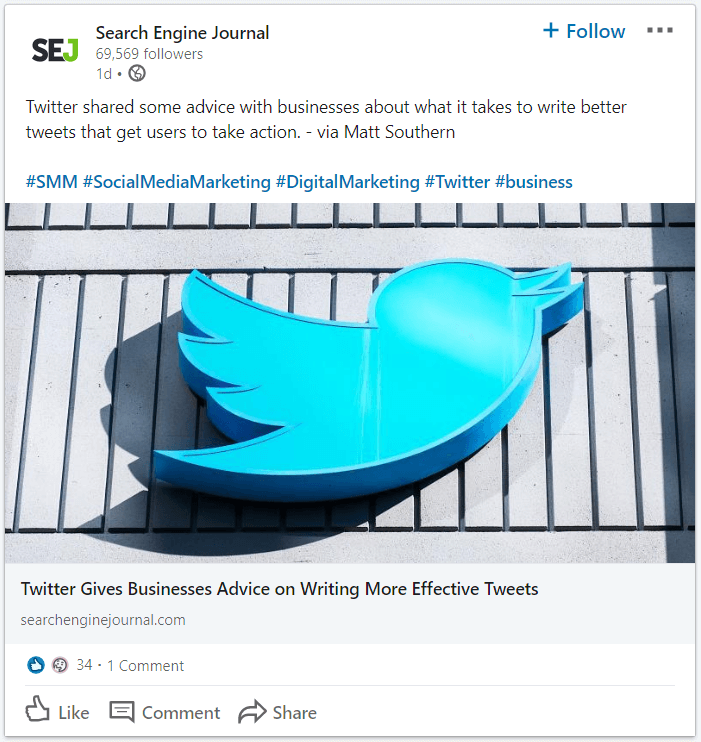It’s happened to the best of us. You’re cruising through your Twitter or Facebook feed, reading posts and comments when suddenly, you come across an acronym you’ve never seen before. “What in the world is ‘BD’?”
Well, as it happens, ‘BD’ stands for, Big Deal, one of the hundreds of acronyms that have cropped up as the digital age forces people to embrace briefness.
In addition to helping you understand posts you see out in the wild as you peruse social media or study your competitor’s content, acronyms can also be a useful tool to achieve a certain brand voice, such as comedic or uber-casual, and can help you target the demographics that tend to use those acronyms the most.
Table of Contents
Start your free 14-day Fanbooster trial
Caution: Avoid these two mistakes when using the social media acronyms on this list
Make sure using the social media acronym fits with your brand voice.
While it can be a tool to drive home a very playful or casual voice, it can also seem phony or out-of-place if that voice doesn’t make sense for your brand.
For example, no one wants to read a medical information site that is trying to joke with LOLs all over the page instead of being serious and authoritative, while businesses that use outdated acronyms to attempt to target young demographics can come across as bogus.
Our advice?
Create and stick to brand guidelines that outline the execution of your voice, such as “creates a casual voice by using slang, contractions, first-person speech and acronyms.”
Then get some boots on the ground and read real posts by users in your target demographics to learn which acronyms they are using and with which nuances.
Social media trends are also rather temporal, and often go just as quickly as they came.
On your quest to make sure you know what each acronym means and how it’s used in the wild, we’ll use this emoji: 🤦 to denote social media acronyms that are rather outdated. Avoid them unless you’re using them ironically or you’re targeting an older demographic that isn’t likely to be very social media fluent.
That’s your warning.
Any improper use from here on out is on you.
Let’s take a look at some popular social media acronyms and their meanings:
Network-Specific Acronyms
To start, it’s probably most helpful to review some of the common acronyms that are used in specific social media networks.
- IG: Instagram
- TW: Twitter
- FB: Facebook
- LI: LinkedIn
- YT: YouTube
- PM: “Private Message” is the more general term for any one-on-one communication that’s not visible to the public. It includes DMs.
- MT: Sometimes when you’re re-sharing a Tweet, you’ll alter the text. That makes it a “Modified Tweet.” That may mean shortening it to fit within the character limit or removing the poster’s handle if they have a private account.

- DM: A “Direct Message” is a message sent on Twitter that is only visible to individuals exchanging them (think of a private message).
- RT: A “Retweet” is when you publish somebody else’s Tweet entirely, to your own feed.
Business Acronyms
Some of us may already know the previous examples as they are hard to miss, however, things can get a bit more complicated when you get to Business Acronyms. Many of you might have even seen these before, but it could be hard to remember or locate what they mean.
Let’s take a look at some of the most popular ones:
- B2C: “Business to Consumer” means a company that is selling to individuals.
- B2B: “Business to Business” means companies that are selling to other companies.
- CPC: “Cost Per Click” means the dollar amount on an advertisement that usually pays for every individual who clicks on their ad.
- CPM: “Cost Per Thousand” this specifically measures the ads instead of the clicks (CPC).
- CR: “Conversion Rate” this is the number of people who take an action and divides it to compare the number by the number who could have.
- CTA: “Call to Action” asks the reader to do something. This is usually a specific action related to building the company’s social presence or to get involved in a marketing push.
- CMGR: “Community Manager”
- CMS: “Content Management System” is the tool you use for editing, scheduling and publishing any written material for the web.

- CTR: “Click-Through Rate” is a conversion rate where the action in question is by clicking on a link.
- PPC: “Pay Per Click” is a metric for advertising costs (same as CPC).
- KPI: “Key Performance Indicator” is a metric your team or business uses to measure success in achieving goals. For social media, this stands for user engagement, conversions, shares or clicks.
- PV: “Page Views” is how many times your page has been viewed.
- ROI: “Return On Investment” measures the money you make in relation to the money you spent to make it. It’s a way of assessing the success of certain promotional or advertising efforts.
- UGC: “User Generated Content” means written or visual material that the individuals using a platform created. This could be comments or blog posts, to photos or video clips.
- SMM: “Social Media Management,” a useful way to denote your field as well a popular and great hashtag to allow other users to find your content.

25: ORM: “Online Reputation Management” or creating, cultivating and maintaining your brand name and its good standing online.
26: SOW: “Scope of Work” which is the documentation where agencies or socialpreneurs agree with clients on deliverables and expectations for the duration of a contract
Technical Acronyms
Although these are not as frequently used as the others that have been listed, they are still important for anyone working within social media to understand some of the most popular technical abbreviations.
If you work in the technical field, you can see these come up when you chat with the IT team or even when handling customer support tickets.
Here are some of the most common Technical Acronyms:
- UX: “User Experience” is a person’s response and reaction in taking actions within a tool.
- ISP: “Internet Service Provider” stands for the company powering your Internet service.
- SaaS: “Software as a Service,” is a model in which software is available on a subscription basis. This is sometimes referred to as “on-demand software” as well.
- SEM: “Search Engine Marketing” is how businesses leverage search engines for marketing purposes.
- RSS: “Really Simple Syndication” is a feed of all posted content from a source, such as a blog.
- TOS: “Terms of Service.” Usually, an online service has a Terms of Service that you must agree to in order to use it. This can be useful to locate any limitations on business activity and details about ownership, both of your data and your content.

- UI: “User Interface” is the display that a person uses to control a tool or how you interact with a website.
- API: “Application Programming Interface” is a set of rules for how pieces of software interact. Social media management tools like Social Report use the APIs of Facebook, Twitter and other networks to post and schedule, and we even make our own data available via an API to be exported out of the system.
- Codec: Any technology for compressing and decompressing data for faster transmission. Codecs can be implemented in software, hardware, or a combination of both.
- FTP: A commonly used protocol for exchanging files over any network that supports the TCP/IP protocol (such as the Internet or an intranet).
- IPSec: A standard for securing Internet Protocol (IP) communications by encrypting and/or authenticating all IP packets.
- ESP: “Email Service Provider” is a company that offers email marketing services. The company may also offer a platform or tool to assist with sending emails.
Fun Acronyms For Daily Use
39. AMA: “Ask Me Anything” is often used on live Q&A sessions on a social channel, but most often refers to sessions hosted on Reddit.

- BAE: “Before Anyone Else” Typically it refers to a person’s significant other, but could be a very close friend as well.
- BFF: “Best Friends Forever”
- BRB: “Be Right Back”
- BTW: “By the Way”
- FBO: “Facebook Official.” This most often refers to making a public announcement of a life development, such as a new job or new relationship, on Facebook to your entire social audience. 🤦
- OMG: Stands for “oh my god” or “oh my gosh.”
- FOMO: “Fear Of Missing Out”
- FTW: “For The Win”
- GTG: “Got To Go” to end a conversation. 🤦
- FYI: “For Your Information”
- ICYMI: “In Case You Missed It” most frequently is used when sharing content that is not current, or referencing a news update (as opposed to more “best practices” general content).

- IDC: “I Don’t Care”
- IDK: “I Don’t Know”
- ILY: “I Love You.”
- IMHO: “In My Humble Opinion”
- IMO: “In My Opinion”
- IRL: “In Real Life,” popular for online daters to establish online and offline relationships.
- JK: This phrase is “just kidding,” and can be helpful in conveying a light-hearted tone when there’s a possibility for a statement to be misconstrued.
- LMAO: “Laughing My Ass Off” Not always the right phrase for business context, but makes it just as necessary to know this acronym when you see it.
- LMK: “Let Me Know”
- LOL: A popular phrase from the beginning of online chat culture, this means “Laughing Out Loud.”
- NBD: “No Big Deal”
- NM: “Not Much”
- NVM: “Never Mind”
- NSFW: “Not Safe For Work” usually designates material that is violent, sexual or otherwise inappropriate for a professional setting.
- FF: “Follow Friday” trend began as a Twitter hashtag for recommending people who request followers.
- JIC: “Just In Case”
- OTP: “One True Pairing” These are two characters that you feel are meant to be together.
- FTW: “For The Win” This one is meant to emphasize the end of a comment, sometimes sarcastic.
- IANAD: “I Am Not A Doctor” A disclaimer if you’re going to say something bordering on medical advice. 🤦
- WDYMBT: “What Do You Mean By That?” 🤦
- BTAIM: “Be That As It May” For very specific acronym users to make a formal argument in an informal context. 🤦
- FUTAB: “Feet Up, Take A Break” Not just a regular break, but a very relaxed break! 🤦
- MCM: “Man Crush Monday” A popular Instagram acronym for defining love for a man on Monday.
- WCW: “Woman Crush Wednesday” This acronym began on Twitter for pointing out posts about an attractive woman, then spread to other networks like Instagram and Facebook.
- FTFY: “Fixed That For You” This is used in Internet comments to correct the grammar of a person that commented earlier, or can be used to be funny. “Fixed it for you” is a variation that has recent popularity.
- SMH: “Shaking My Head” Said to express disappointment or disbelief
- MTFBWY: “May The Force Be With You” Borrowed from “Star Wars,” it’s another way of saying good luck. 🤦
- TL;DR: “Too Long; Didn’t Read” Often written in a comment, if a person doesn’t want to read an entire article, but has something to say anyway. This can also mean “Too Long; Don’t Read,” a comment that is gaining popularity for users to use on their own long posts as a means to add a quippy summary sentence that can function as an opportunity for them to share what they think about the situation.
- DAE: “Does Anyone Else?” It’s used to frame a question. 🤦
- BB: “Bye Bye” 🤦
- OOMF: “One of my followers”
- OOTD: “Outfit of the Day” usually accompanied by an image of that day’s outfit
- NGL: “Not Gonna Lie” Use this one to preface a truth-bomb
- TBT: “Throwback Thursday” This is used when people want to re-share old images or posts
- FBF: “Flashback Friday” This acronym is a variation of “Throwback Thursday” in case you missed your chance to share on Thursday!
- BTS: “Behind the Scenes” But also a popular K-pop group, so check the context here.
- HMU: “Hit Me Up” aka call me, text me, otherwise reach out to me.
- ATM: “At the Moment” Context also matters here, make sure they aren’t talking about the bank apparatus where they get their cash.
- RT: Again meaning “Retweet” this can simply be used signify agreement with the post if this acronym is written alone regarding a post.
- OFC: “Of course”
- AITA: “Am I the Asshole?” This gained popularity on a Reddit subreddit where people could describe a situation that occurred and get public opinion on whether they were in the wrong.
- ELI5: “Explain Like I’m 5” used to ask for simple explanations to complex concepts.
- OP: “Original Poster” the user that originally posted the content that you’re referring to when you comment or share.
- TMI: “Too much information” used to acknowledge that the post information might be an overshare.
- WBU: “What (a)Bout You?”
- WFH: Work From Home/Working From Home
- TFW: That Feeling When / That Face When

98: JSYK: “Just So You Know”
Bonus: Here are a couple popular social media shorthands that may look like acronyms, but actually aren’t. These tend to be onomatopoeia to attempt to convey sounds we make in real life conversation:
- Oof: Used to express the sounds you may make when something is unfavorable, like a situation where you might say “yikes”
- Aha or ahaha: Used to denote laughter, but often in the context of more uncertain, nervous laughter
- Sksksk: Used to express snickering, or a half-suppressed and typically scornful laughter
Slang
- Extra: Over-the-top or dramatic
- Periodt: Used to end a statement with an emphasis meaning you won’t accept any arguments or discussion about what you just stated.
- Yas/Yaaas: An over-excited version of “yes” when you highly approve of something.
- Fit: Short for “outfit”
- Bet: Used either as an affirmation or as accepting a challenge. “We’re meeting at the restaurant at 6.” “Bet.” or “You can’t finish all that ice cream.” “Bet.”
- Fire: When something is awesome and you highly approve of it, it’s “fire.”
- Shade: A situation where someone illustrated sneaky or nefarious actions toward someone else, this can also be used as judging someone or having an unfavorable opinion of someone.
- Cap/no cap: Capping is lying, so you might see users comment “don’t cap” under something they think is untrue or they may preface “No cap” before they say something that sounds outlandish but is actually true.
- Flex: Showing off
- Lit: Amazing, high-energy, or otherwise positive. It can also mean under the influence.
- Salty: To be bitter about something
- Thirsty: To be desperate
- Slay: To do really well at something
- Shook: To be shaken up by something or in extreme disbelief.
- Stan: Derived from the Eminem song, “to stan” is to be a dedicated fan of something/someone, whereas a “stan” is the noun form of a fan.
- Tea: Gossip. You can also say it as an affirmation when you think something someone said is true.
- Canceled: When someone does something unfavorable, they can pronounced as “canceled.”
- Clout: Fame, attention, and influence
- On point: To be exactly right and meeting standards.
- Beef: An issue or tension that someone has with another person.
- Fam: Short for “family”
- Clickbait: Using a provocative title or description that doesn’t accurately portray the content with the sole purpose of acquiring clicks.
- Sliding into the DMs: Sending someone a direct message, usually someone that you don’t know and often with a romantic intent.
- Squad: A group, usually of friends
- Receipts: Proof
- Mood: Used to express that you relate to something, that something matches your “mood”
- Clap-back: A comeback, usually when it’s done well and full of attitude.
- Troll: Both a noun and a verb, this is either the person or the action that purposely tries to provoke people on the internet.
- Ghost: To completely disappear unannounced from an interpersonal relationship.
- Savage: Ruthless, self-serving or petty.
- Gassed: When someone has received a lot of compliments or admiration.
If you read a post recently and an acronym in the middle of it impeded your understanding, hopefully this list provided some clarity. If you’re looking to craft your brand voice or to shorten your copy to meet character limits, hopefully you found some new ideas.
Did we miss any big ones you love to use?
Let us know on Twitter at @Fanbooster.



